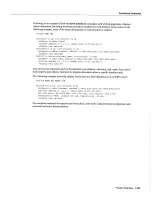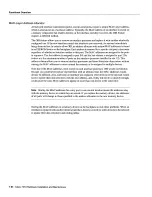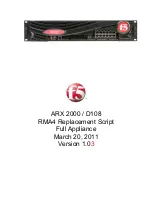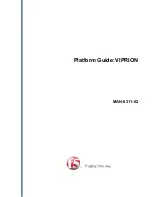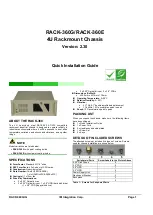
Safety
Recommendations
Disconnect
all
power
and
external
cables
before
installing
or
removing
chassis
Do
not
work
alone
when
potentially
hazardous
conditions
exist
Never
assume
that
power
has
been
disconnected
from
circuit
always
check
Do
not
perform
any
action
that
creates
potential
hazard
to
people
or
makes
the
equipment
unsafe
Never
install
equipment
that
appears
damaged
Carefully
examine
your
work
area
for
possible
hazards
such
as moist
floors
ungrounded
power
extension
cables
and
missing
safety
grounds
In addition
use
the guidelines
that
follow
when
working
with
any equipment
that
is
disconnected
from
power
source
but
still
connected
to
telephone
wiring
or other
network
cabling
Never
install
telephone
wiring
during
lightning
storm
Never
install
telephone
jacks
in
wet
locations
unless
the jack
is
specifically
designed
for
wet
locations
Never
touch
uninsulated
telephone
wires
or terminals
unless the telephone
line
has
been
disconnected
at
the
network
interface
Use
caution
when
installing
or
modifying
telephone
lines
Preventing
Electrostatic
Discharge
Damage
Electrostatic
discharge
ESD
damage
which
occurs
when
electronic
cards
or
components
are
improperly
handled
can
result
in
complete
or intermittent failures
Each
processor
module
comprises
printed
circuit
board
that
is
fixed
in
metal
carrier Electromagnetic
interference
EMI
shielding
connectors
and
handle
are
integral
components
of the carrier
Although
the
carrier
helps
to
protect
the
module
use
an
antistatic
strap
whenever
handling
processor
modules
Handle
the
carriers
by
the handles
and
the
carrier
edges
only
never
touch
the boards
or connector
pins
Caution
Always
tighten
the captive
installation
screws
on
the
processor
modules
See
Figure
1-21
These
screws
prevent
accidental
removal
provide
proper
grounding
for
the
system
and
help
to
ensure
that
the bus
connectors
are properly
seated
in
the
backplane
Following
are guidelines
for preventing
ESD
damage
Always
use
an
ESD
wrist
strap
or
ankle
strap
and
ensure
that
it
makes
good
skin
contact
When
removing
processor
modules
connect
the
equipment
end
of the
strap
to
an unfinished
chassis surface
or
to
one
of the captive
installation
screws
on an
installed
interface
processor
Connect
the
strap
to
an unpainted
inner
surface
of the chassis
When
installing
processor
modules
use the
ejector
levers
to
properly
seat
the
bus
connectors
in
the
backplane
then
tighten
both
captive
installation
screws
These
screws
prevent
accidental
removal
provide
proper
grounding
for the
system and
help
to
ensure
that
the bus
connectors
are
seated
in
the
backplane
When
removing
an
RSP2
or interface
processor
use
the ejector levers
to
release
the
bus
connectors
from
the
backplane
Grasp
the handle
and
pull the
carrier
out
slowly
using
your hand
along
the
bottom
of the
carrier
to
guide
it
straight
out
of the slot
Handle
processor
modules by
the handles
and
carrier
edges
only
avoid
touching
the
board
or
any
connector
pins
Preparing
for
Installation
2-3
Summary of Contents for 7513 Series
Page 1: ......
Page 11: ...Cisco 7513 Hardware Installation and Maintenance ...
Page 121: ...Site Log 2 56 Cisco 7513 Hardware Installation and Maintenance ...
Page 162: ...Troubleshooting the Processor Subsystem 4 10 Cisco 7513 Hardware Installation and Maintenance ...
Page 266: ...Interface Processor LEDs B 16 Cisco 7513 Hardware Installation and Maintenance ...
Page 270: ...C 4 Cisco 7513 Hardware Installation and Maintenance ...
Page 288: ...18 Cisco 7513 Hardware Installation and Maintenance ...

